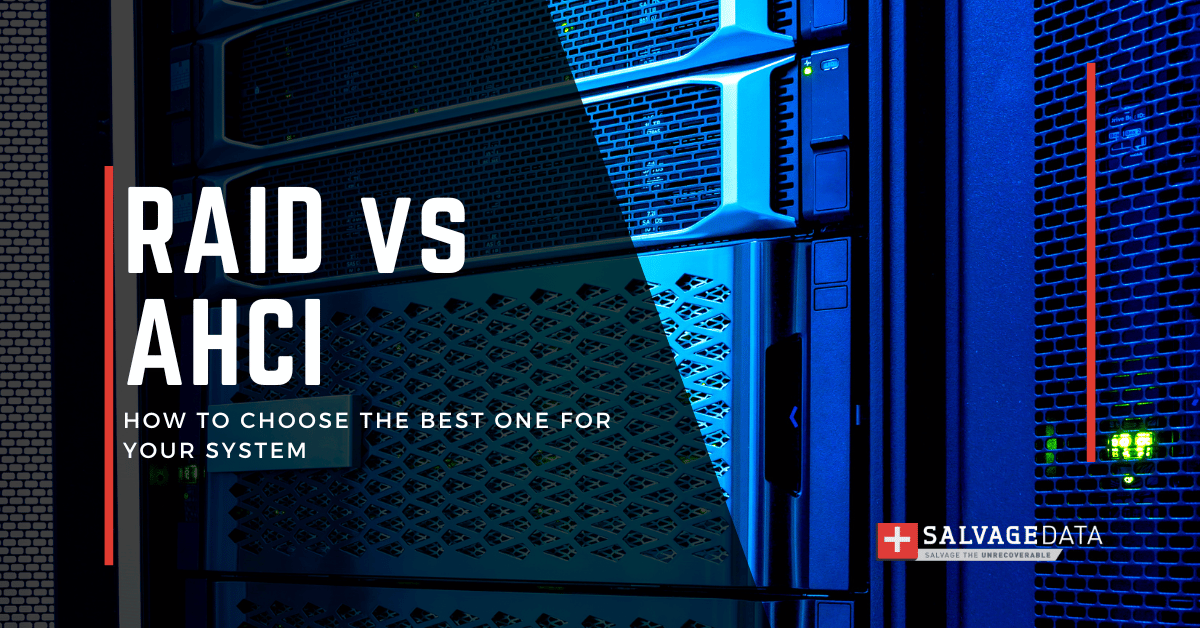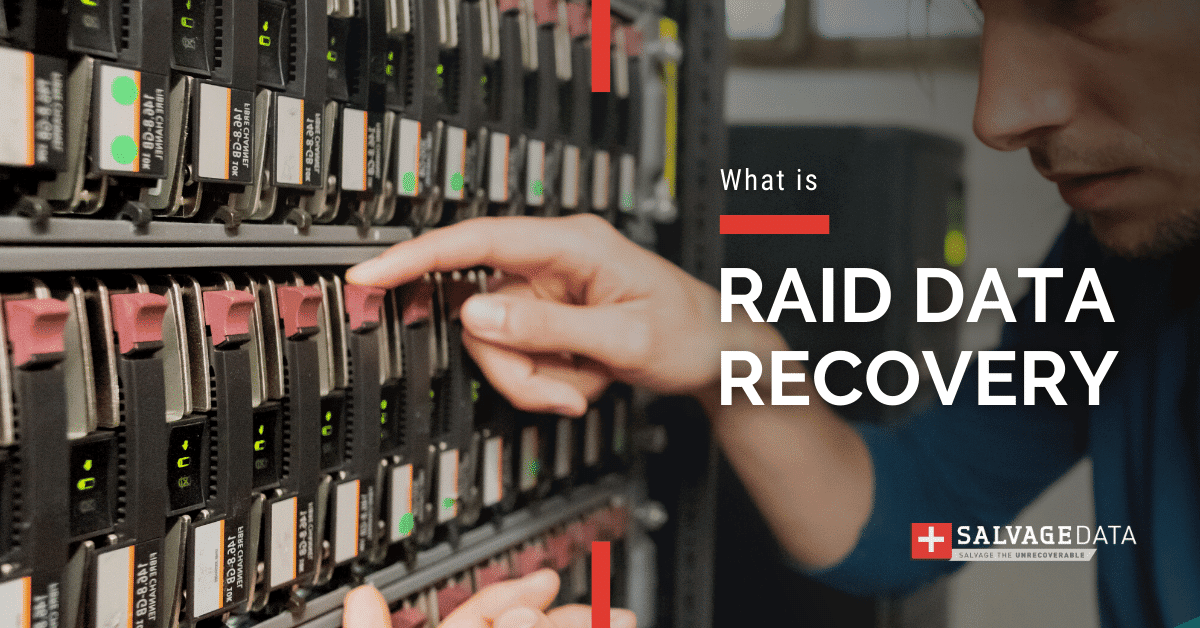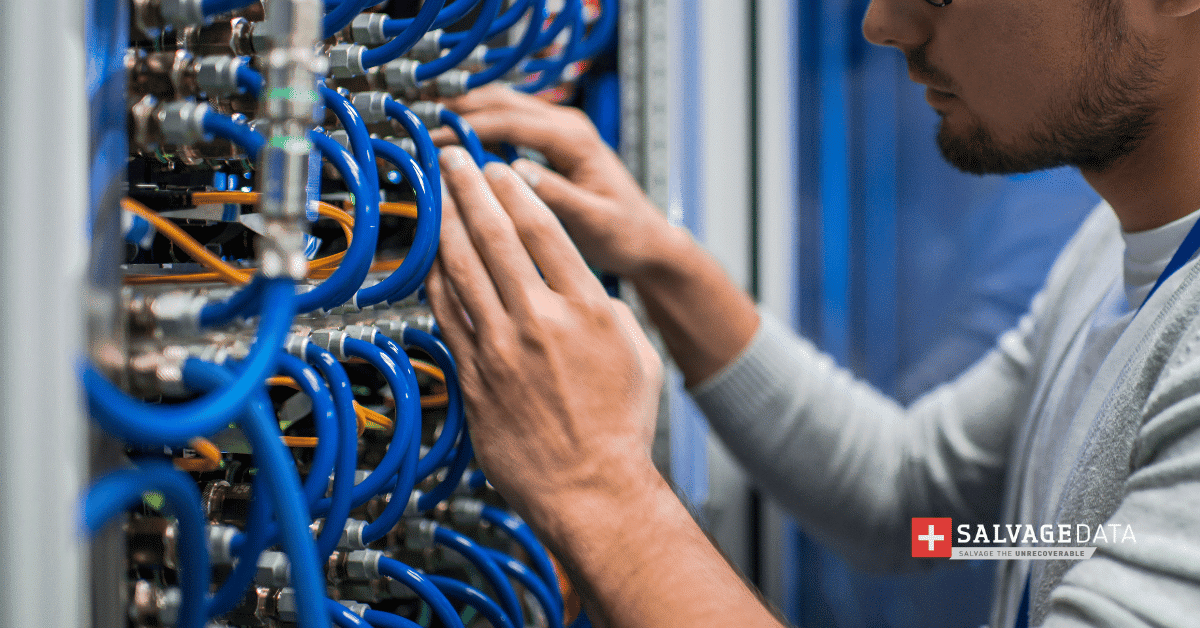Recent Articles
How To Recover Overwritten Files
The Snowflake Data Breach: A Comprehensive Overview
Mac Not Recognizing External Hard Drive: Quick Fix Solutions
How Multi-Cloud Backup Solutions Can Prevent Data Disasters
Capibara Ransomware: What is it & How to Remove
What Should a Company Do After a Data Breach: The Ticketmaster Incident
Secles Ransomware: Removal Guide
What To Do When Your Chromebook Freezes
How to Create Hyper-V Backup
What Is The Best Data Recovery Software For PC

I think there's an issue with my storage device, but I'm not sure Start a free evaluation →
I need help getting my data back right now Call now (800) 972-3282
AHCI (Advanced Host Controller Interface) and RAID (Redundant Array of Inexpensive Disks) are two storage technologies that are often used in multiple drives computers and systems. They both have their advantages and disadvantages, which can make it difficult to decide which one is right for you or your business. To help you decide between the technologies, we break down AHCI vs RAID, comparing the main differences between them.
What is AHCI
Advanced Host Controller Interface (AHCI) is an interface specification that allows the storage driver to enable advanced Serial ATA (SATA) features like Native Command Queuing and hot-plug.
Unlike RAID, AHCI does not have different levels like RAID configurations. AHCI operates as a single interface specification developed by Intel to enable advanced features for Serial ATA (SATA) drives.
It primarily focuses on improving the communication speed between the host (typically a computer’s motherboard) and the connected storage drives. Some of the key features facilitated by AHCI include Native Command Queuing (NCQ) and hot-plug functionality.
Advantages of AHCI
One advantage of AHCI is that it simplifies driver development and adds compatibility with different operating systems. In addition, AHCI allows hot-plugging and port multiplication, which means you can add or remove drives without having to restart your computer.
Limitations of AHCI
Unfortunately, AHCI lacks speed. That’s because AHCI works as a transporter of the information between the hard drive to SATA controllers, and keeps the requests in a queue.
Where you can use AHCI
You can use AHCI with large database holding centers or smaller enterprises, and even add it to RAID.
This system is also a great help when exchanging HDD for SSD, as it allows an easy connection and a slow hybridization between the drivers.
However, you can only use it with Intel motherboards.
What is RAID
RAID (Redundant Array of Independent Disks) is a data storage virtualization technology that combines multiple physical disk drive components into one or more logical units for data redundancy, performance improvement, or both.
RAID is a technology and a method of improving performance or reliability by using additional hard drives.
It can be used to increase the speed of data access or to provide redundancy in case of a drive failure. Even if a disk fails on your array, you can still access your data.
Advantages of RAID
One advantage of RAID is that it can be used with any type of drive, including SSDs and HDDs. In addition, RAID is compatible with all operating systems.
Limitations of RAID
One significant drawback of RAID systems is the potential for increased complexity, especially in more advanced RAID configurations. As RAID levels progress from basic mirroring and striping to more intricate parity-based schemes, the intricacy of managing and recovering from failures amplifies.
Additionally, while RAID offers enhanced data protection through redundancy, it does not eliminate the risk of data loss, particularly in scenarios where multiple drives fail simultaneously.
Furthermore, the cost of implementing RAID can be a limiting factor for some users, as it often requires additional hardware such as a RAID controller.
RAID levels and their functions
There are several levels of RAID, each one with a specific function and purpose.
Known as striping, RAID 0 enhances performance by distributing data across multiple drives without redundancy, making it suitable for speed-focused applications.
RAID 1, or mirroring, duplicates data across pairs of drives, offering fault tolerance but using half of the total storage capacity.
The RAID 5 utilizes striping and parity to achieve both performance and fault tolerance, making it suitable for environments where a balance between speed and data protection is crucial.
RAID 6 builds on RAID 5 by incorporating dual parity, providing increased fault tolerance, especially in scenarios with larger capacity drives.
RAID 10 combines aspects of RAID 1 and RAID 0, offering the redundancy of mirroring and the performance of striping, making it a popular choice for environments prioritizing both speed and data security.
Where you can use RAID
If you’re using an SSD-based storage center, you’ll need to use RAID connections to guarantee the endurance of the data.
Not only enterprises can benefit from RAID, though, as individual users can also apply it for their data storage.
AHCI vs RAID: differences overview
AHCI and RAID are two different storage technologies that don’t actually compete since they have different purposes and uses.
ACHI transports data from a drive to a motherboard while RAID organizes several hard drives into a single storage unit.
So, to decide among them you must first define your need and then compare the technologies to choose the best fit for you.
System Capabilities
- AHCI does not affect the speed of the SATA interface but allows the usage of more advanced features inherent in SATA.
- RAID can increase the speed of data access or provide redundancy in case of a drive failure.
Component Requirements
- AHCI requires a SATA host bus adapter and support from the motherboard chipset.
- RAID can be used with any type of drive, including SSDs and HDDs.
Storage Management Requirements
- AHCI allows hot-plugging and port multiplication.
- RAID is compatible with all operating systems.
Security Requirements
- AHCI supports end-to-end data protection if the drives support it.
- RAID supports parity which can be used to improve data security.
Cost
- AHCI is typically less expensive than RAID because it does not require additional hardware.
- RAID can be more expensive than AHCI because it requires additional hardware, such as a RAID controller.
Availability
- AHCI is available on most motherboards and chipsets.
- RAID is not as widely available as AHCI and may require special hardware or software.
Performance
- AHCI typically has better performance than RAID because it does not have the overhead of parity or mirroring.
- With drives configured for striping or caching, RAID can have better performance than AHCI.
Operating System Support
- AHCI is supported by all major operating systems.
- RAID is supported by all major operating systems.
How to choose between AHCI and RAID?
So, which storage technology should you use? AHCI or RAID? It depends on your needs.
If you need increased speed or redundancy, then RAID is the best option for you.
If you need hot-plugging or port multiplication, then AHCI is the best option for you.
About all the other factors, you should analyze which will have a positive impact on your daily storage needs.
At any moment you can contact SalvageData experts for help with your storage systems, be it AHCI or RAID.













